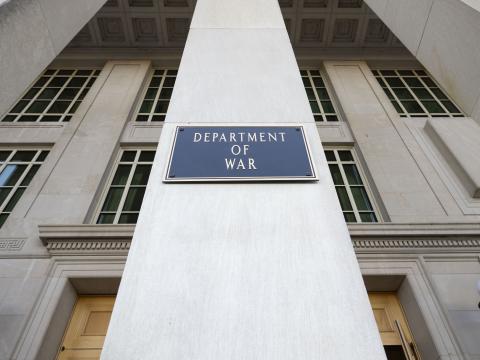President's Commentary: At Last, a Realistic National Defense Strategy
The new National Defense Strategy recently released by the U.S. Defense Department represents a refreshing change.
The new National Defense Strategy recently released by the U.S. Defense Department represents a refreshing change. Unlike many of its predecessors, this strategy focuses on the world as it is rather than what we wish it could be. It sheds much of the naiveté that characterized the recent past, and it removes much of the political masking and kabuki that has negatively affected national security.
For starters, it calls out Russia and China for what they are—revisionist powers that are central challenges to the prosperity and security of the United States and our allies. They are the two key long-term threats we must face. As authoritarian regimes, along with Iran and North Korea, they often act without worrying about support from the public or legislatures, unlike the United States and its fellow democracies. Our adversaries can often move more quickly and with greater singleness of purpose than many governments in the free world.
This characterizes the new strategy’s intellectual honesty. Far from abandoning alliances, the strategy acknowledges that the United States cannot go it alone. The nation needs treaties, agreements and partnerships with like-minded nations. Yet the strategy also declares that these allies and partners must place the same level of effort as the United States on modernization, including interoperability with our nation. Without this, the capability chasm between U.S. and coalition partner capabilities will grow even beyond what it is today.
Overall, the strategy describes three distinct lines of effort. The first is to rebuild military readiness as a more lethal joint force is developed. The second is to strengthen international alliances and add like-minded partners to security efforts. The third is to reform defense business practices for greater performance and affordability.
Priorities are clear. The global operating model comprises nuclear, cyber, space, strategic mobility, counter weapons of mass destruction (WMD) proliferation, and command, control, communications, computers, intelligence, surveillance and reconnaissance (C4ISR) activities. Mobility and increased lethality must define a force to meet these challenges.
But the strategy does not simply seek more of everything. It declares that we must challenge the status quo and think differently. We need to understand history, but we also must recognize that we are in a rapidly changing and evolving world politically and economically. We must have a tighter focus on adaptation and rapid integration of new technologies and bringing lethality to the fight. We also must expand our capabilities to operate in space, counter electronic warfare, perform with degraded communications and function across the spectrum of information operations.
The character of war is changing. More technology is entering the fight, but more countermeasures to that technology are joining the fray as well. Unfortunately, the strategy does not emphasize research and development heavily enough. The commercial sector cannot provide sufficient effective innovations to fill all defense gaps, and government laboratories and research and development activities will be essential to meet the evolving challenges around the world. The new budget submitted to Congress begins to address this, but more must be done.
Another issue begging for greater focus involves bringing the force to the fight. While the strategy emphasizes mobility, it needs stronger emphasis on maritime and airborne transportation assets that must operate globally in potentially anti-access and area-denial (A2/AD) environments.
Bringing this strategy to fruition will take a bipartisan effort. Our force has atrophied over the past decade. There is not enough funding to write a check to fix every shortcoming and meet every challenge. The country’s leadership must establish priorities at all levels. We have been on a defense holiday for the last 10 years, but the world hasn’t waited while we rested.
While Congress has wasted time and money with continuing resolutions, adversaries have charged forward. The U.S. defense budget must allow necessary planning for the future. Badly needed capabilities are not reaching the force, and they will become more essential as our military supremacy ebbs to mere superiority rather than supremacy—or less. With this decline, instead of being able to conduct effective operations as we see fit, we may struggle in a contested battlespace.
This strategy aligns well with AFCEA International’s roles and goals. We are a global association that serves to bridge government and industry, which fits well with the strategy’s three lines of effort. The threats facing the United States and its allies no longer are regional—they are global. And the United States must be predictable at the strategic level for allies and adversaries alike. Conversely, at the operational level, our forces must be unpredictable and lethal.
The National Defense Strategy applies to the core values of the free world. Military strength and capability both underpin and intertwine all aspects of national power. A strong economic base depends on a strong military that ensures freedom of movement and commerce, along with security. Facing the truth can set and keep us free.




Comments